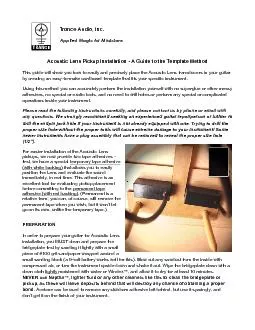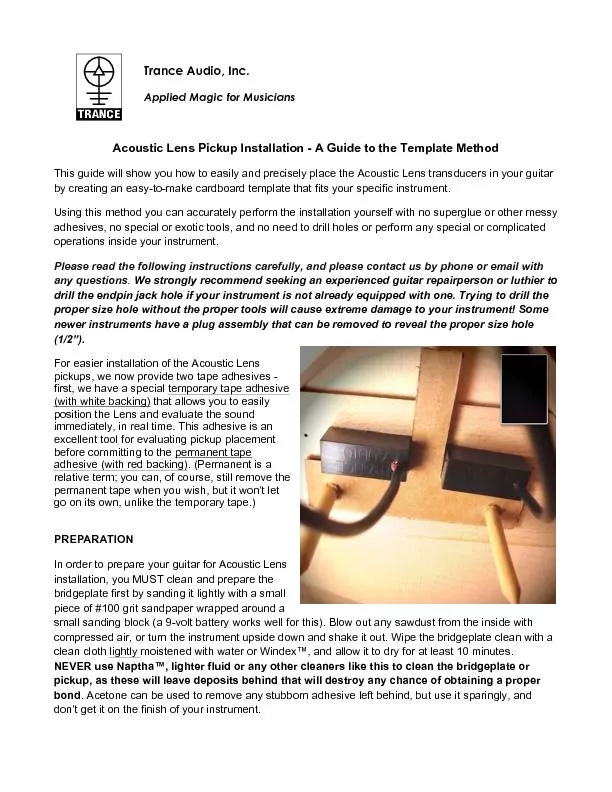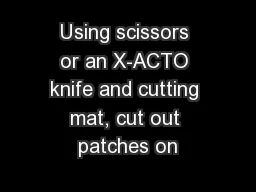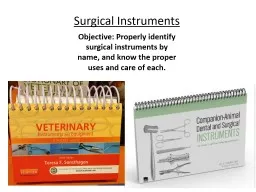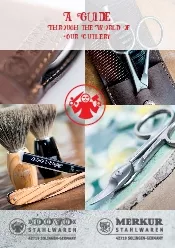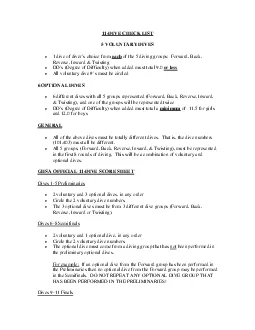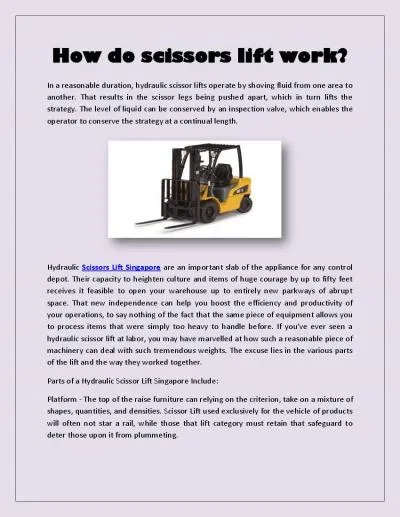PDF-lashlight (optional) Using the scissors, cut a 2
Author : pasty-toler | Published Date : 2015-11-18
tees and place the template on a flat surface Use the ruler to line up the two saddle slot marks on the template and draw a line connecting them with the pen or
Presentation Embed Code
Download Presentation
Download Presentation The PPT/PDF document "lashlight (optional) Using the scissors..." is the property of its rightful owner. Permission is granted to download and print the materials on this website for personal, non-commercial use only, and to display it on your personal computer provided you do not modify the materials and that you retain all copyright notices contained in the materials. By downloading content from our website, you accept the terms of this agreement.
lashlight (optional) Using the scissors, cut a 2: Transcript
Download Rules Of Document
"lashlight (optional) Using the scissors, cut a 2"The content belongs to its owner. You may download and print it for personal use, without modification, and keep all copyright notices. By downloading, you agree to these terms.
Related Documents

